A diatonic scale is a sequence of seven notes connected by a specific pattern of whole and half steps.
It consists of a combination of five whole steps and two half steps 一 creating a foundation that is essential in Western music.
As a music producer, understanding all about diatonic scales and diatonic chords is super important.
This is because these scales and chords form the basis of most melodies and harmonies you’ll be playing around with daily.
In today’s article, we’ll break down:
- Diatonic scale essentials ✓
- The major diatonic scale & minor diatonic scale ✓
- The harmonic minor scale & melodic minor scale ✓
- Diatonic chords/diatonic modes ✓
- Major triads & minor triads ✓
- Major keys/minor keys ✓
- Seventh chords in major scale ✓
- Seventh chords in minor scale ✓
- Diatonic chord progressions ✓
- Modulation and diatonic harmony ✓
- Scale degrees and relative major/relative minor scale ✓
- Songwriting with diatonic harmony ✓
- Diatonic scales and chords in production ✓
- Much more about the diatonic scale ✓
After this article, you’ll know everything about any given diatonic scale and diatonic chords; basically the entire diatonic system.
This way, you can create more harmonically captivating music and successfully create epic chord progressions (yes, even without extensive music theory knowledge).
Your tracks will be more cohesive, and you’ll learn how to manipulate diatonic harmony like a professional.
So, let’s dive into what a diatonic scale is…
Table of Contents
What is a Diatonic Scale?

A diatonic scale is a sequence of seven musical notes connected by a specific pattern of whole and half steps.
And again, this scale forms the foundation of Western music theory and will help you create legendary melodies and harmonies.
Diatonic scales are key to understanding how music works, and essential for anyone looking to improve their production skills.
Fun fact: The term “diatonic” comes from the Greek word meaning “through the tones” (seven tones in this case).
Diatonic scales are used to build diatonic chords, which are chords made up of notes from the same scale.
These scales are the building blocks of most popular music genres, and yes, we’ll be breaking down everything in detail throughout the article.
-
Pro Tip
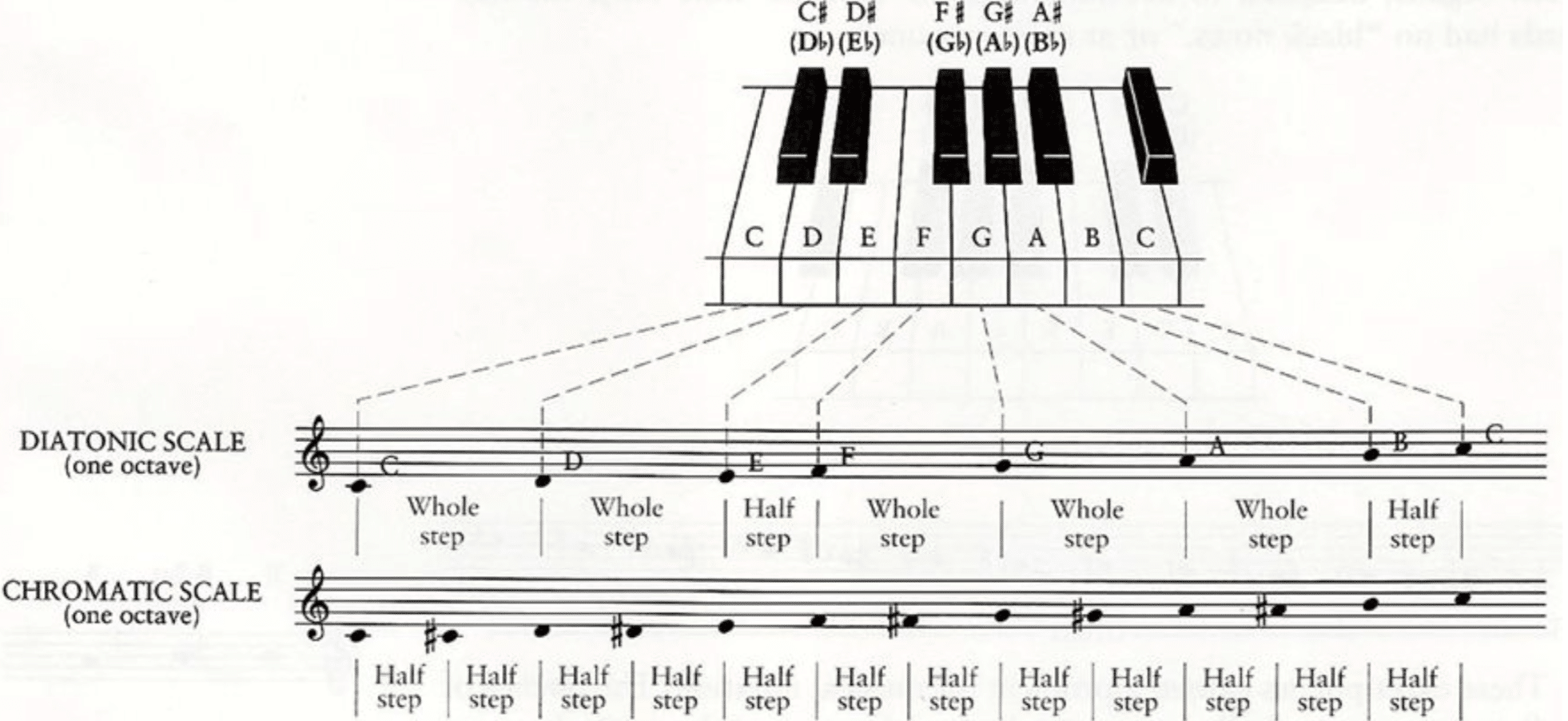
When playing around with the seven diatonic scales, it’s important to understand the difference between diatonic and chromatic scales.
- Diatonic scales are built from an interval sequence of whole and half steps within an octave.
- A chromatic scale consists of all twelve pitches within the octave, each a half step apart.
For beginners, mastering basic diatonic chords formed from diatonic scales is essential before jumping into non-diatonic scales.
Non-diatonic scales include notes outside the standard seven-note pattern 一 adding more complexity and color to your music.
Side note, if you want to learn all about chromatic scales, we’ve got you covered.
So now that you know what a diatonic actually is, let’s dive deeper into the different types of diatonic scales and how they function.
The Major Scale
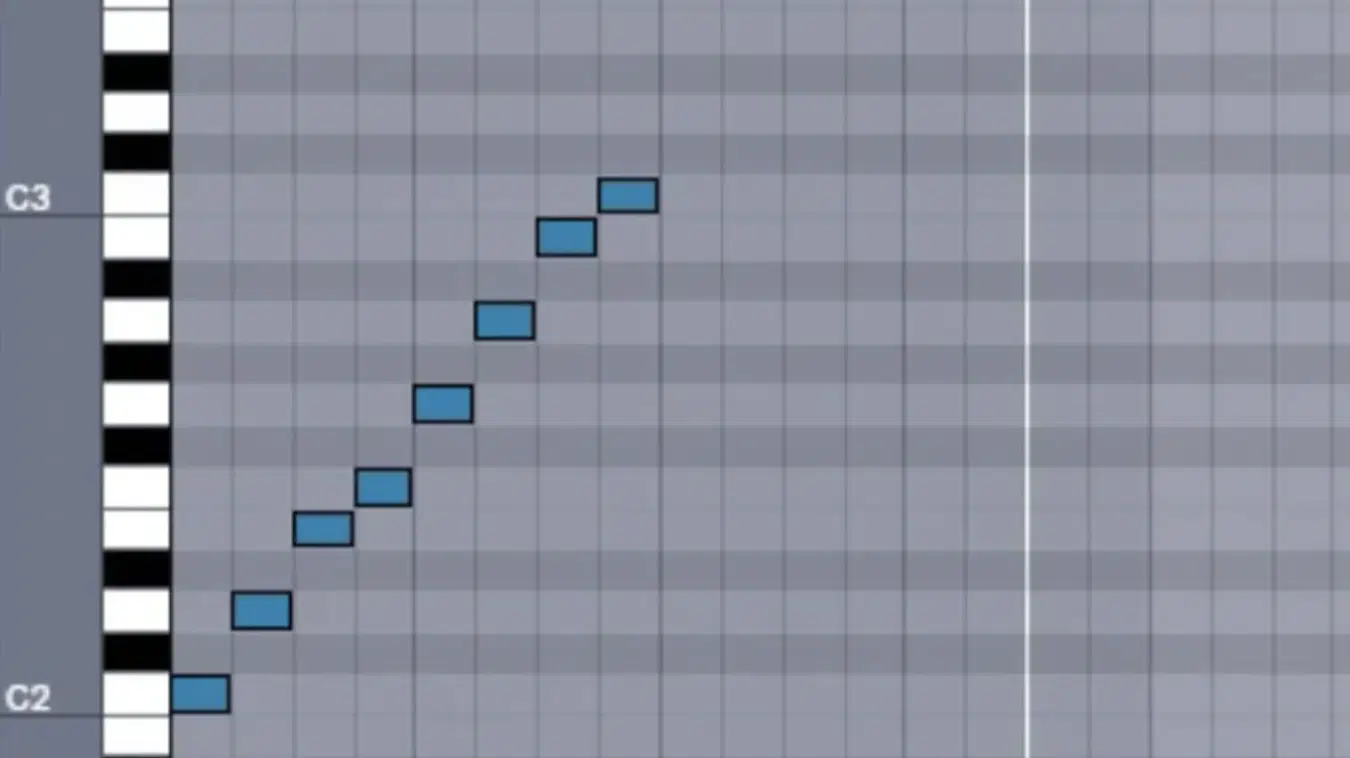
C Major Scale In DAW
The major scale is one of the most fundamental diatonic scales that consists of only seven notes, with a specific pattern of whole and half steps:
- Whole step/whole tone
- Whole step
- Half step/semitone
- Whole step
- Whole step
- Whole step
- Half step
This pattern creates the familiar “do-re-mi” sound of the major scale.
The major scale is used in basically all popular genres, from classical to pop, and is the basis for much of Western music.
You’ll need to have a solid understanding of the major scale as a producer, if nothing else to be able to manipulate it in super interesting ways.
In the key of C major, the notes are: C-D-E-F-G-A-B.
These notes form the C major scale which is, you guessed it, a diatonic scale (written: diatonic C major scale).
Each note in the major scale is called a scale degree, and each scale degree has a specific name 一 like the tonic (first degree) and the dominant (fifth degree).
Knowing these terms will help you master music theory much faster.
For example, the C major scale’s pattern can be applied to any starting note to create other major scales, such as G major or D major as the starting note.
-
Pro Tip
Understanding the major scale is key for building diatonic chords. In the C major scale, you can build a C major chord using the first (C), third (E), and fifth (G) degrees of the scale. This principle applies to all major scales, making it a versatile tool. The major scale’s structure will help you create a sense of resolution and stability in your tracks.
The Natural Minor Scale
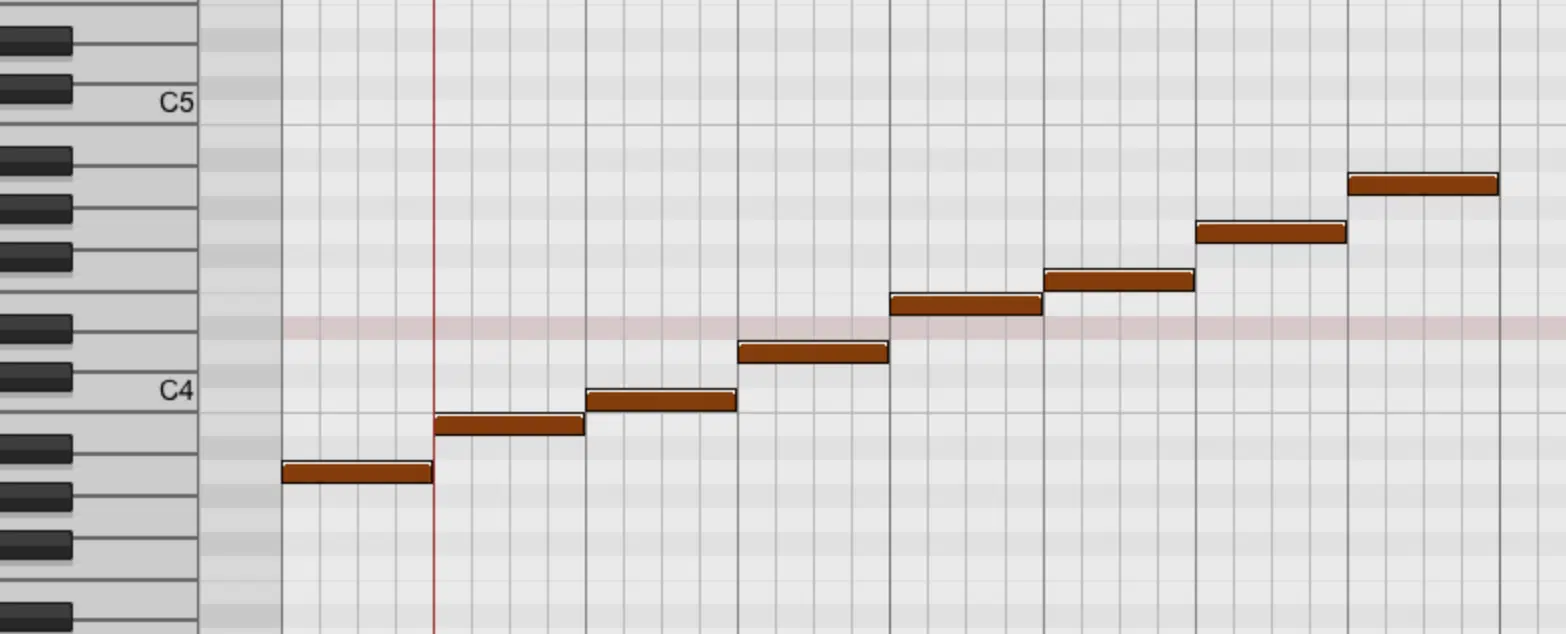
A Natural Minor Scale
The natural minor scale (Aeolian mode) is another essential diatonic scale, also consisting of only seven notes but follows a different pattern of whole and half steps:
- Whole step
- Half step
- Whole step
- Whole step
- Half step
- Whole step
- Whole step
This pattern gives the natural minor scale its distinct, sadder sound compared to the major scale, which is bright and uplifting (traditionally).
The natural minor scale is often used to help songs really hook people in and hit them right in their feels, so to speak.
In the key of A minor, the notes are A-B-C-D-E-F-G.
These notes form the A natural minor scale, and understanding the natural minor scale is key for creating music with a darker or more emotional tone.
It’s widely used in genres like rock and metal.
Just remember that the natural minor scale shares the same notes as its relative major, so in this case it would be C major.
-
Pro Tip
The natural minor scale is perfect for creating diatonic chords that evoke a deeper emotional response.
For instance, in the A natural minor scale (shown above), you can build an A minor chord using the first (A), third (C), and fifth (E) degrees.
This relationship between the natural minor scale and its relative major scale provides flexibility in composing music.
By mastering natural scales like this, you’ll be able to knock out more nuanced and emotionally engaging melodies and harmonies. If you want to learn all about relative minors and majors, we’ve got you.
The Harmonic Minor Scale
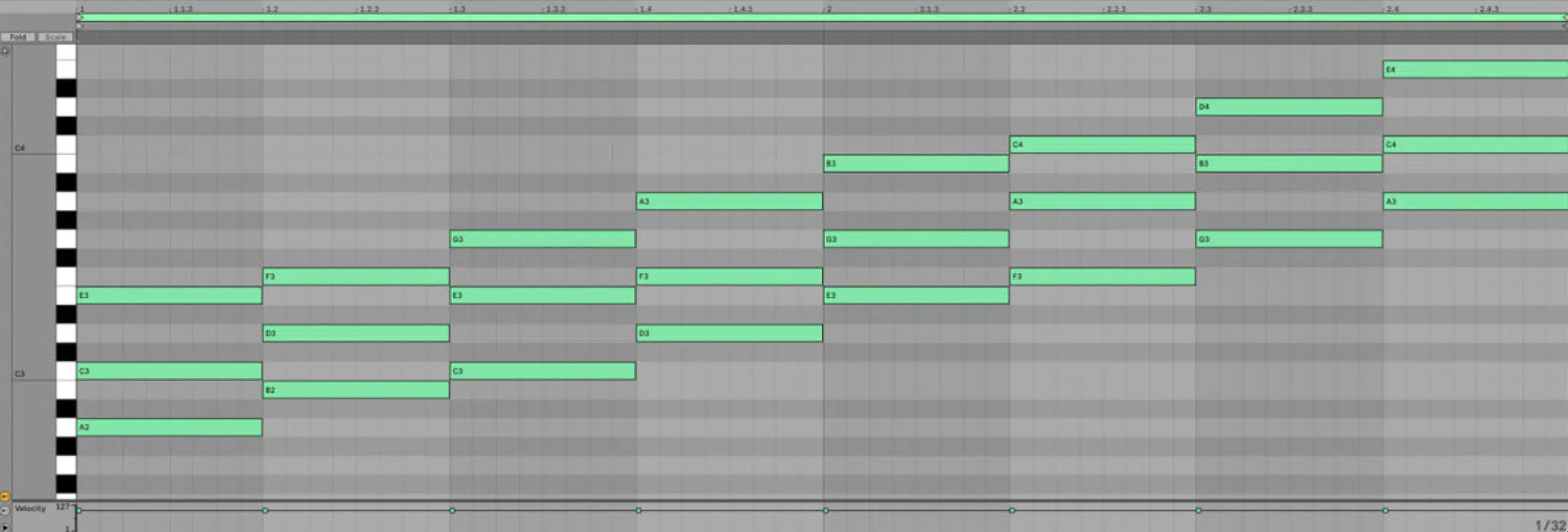
The harmonic minor scale is a variation of the natural minor scale, featuring a raised seventh degree, which creates a leading tone that resolves strongly to the tonic.
The interval sequence of whole and half steps is:
- Whole step
- Half step
- Whole step
- Whole step
- Half step
- Augmented second
- Half step
That augmented second interval gives the harmonic minor scale its unique, exotic sound, which most people find very intriguing.
In A harmonic minor, the notes are A-B-C-D-E-F-G#.
This raised seventh degree makes the harmonic minor scale perfect for pop, classical, and jazz music, where creating tension and resolution is key.
By using the harmonic minor scale, you can add a distinctive flavor to your music that stands out and really break out your creativity and versatility.
The Melodic Minor Scale
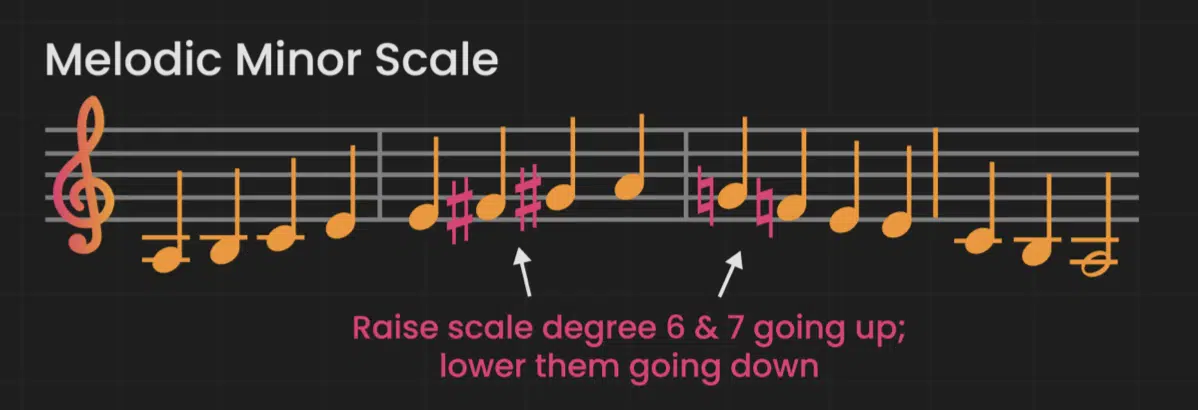
The melodic minor scale has two forms:
- Ascending
- Descending
The ascending form raises both the sixth and seventh degrees 一 creating a super smooth melodic line.
The pattern for the ascending melodic minor scale is: whole step, half step, whole step, whole step, whole step, whole step, half step.
The descending form reverts to the natural minor scale.
In A melodic minor ascending, the notes are A-B-C-D-E-F#-G#, which gives a much different feel when compared to the natural or harmonic minor scales.
When descending, the notes are A-G-F-E-D-C-B, matching the natural minor pattern.
This dual nature makes the melodic minor scale versatile for both melodic and harmonic purposes (like adding variety and depth).
Diatonic Chords: Breaking it Down

Diatonic chords are built from the notes of diatonic scales, and each scale degree can be used to form a triad (which is a three-note chord).
In a major scale, the diatonic chords include:
- Major triads
- Minor triads
- Diminished triads
For example, in the C major scale, the chords are C major, D minor, E minor, F major, G major, A minor, and B diminished.
These chords provide the harmonic foundation for many songs you know and love, like Ed Sheeran’s ‘Shape of You.’
Diatonic chords follow specific interval patterns depending on the scale, of course, and by mastering them, you can create cohesive, harmonious chord progressions.
So, knowing how to build and use diatonic chords will greatly enhance your music production skills.
-
Pro Tip
Using diatonic chords in different progressions can create various emotional impacts in your music. For example, a I-IV-V progression can evoke a sense of optimism and triumph, while a vi-IV-I-V progression can convey a deeper, more reflective mood, perfect for a heart-wrenching beat or a nostalgic indie track.
Triads in Major Scale (Major Triad) & Triads in Minor Scale (Minor Triad)
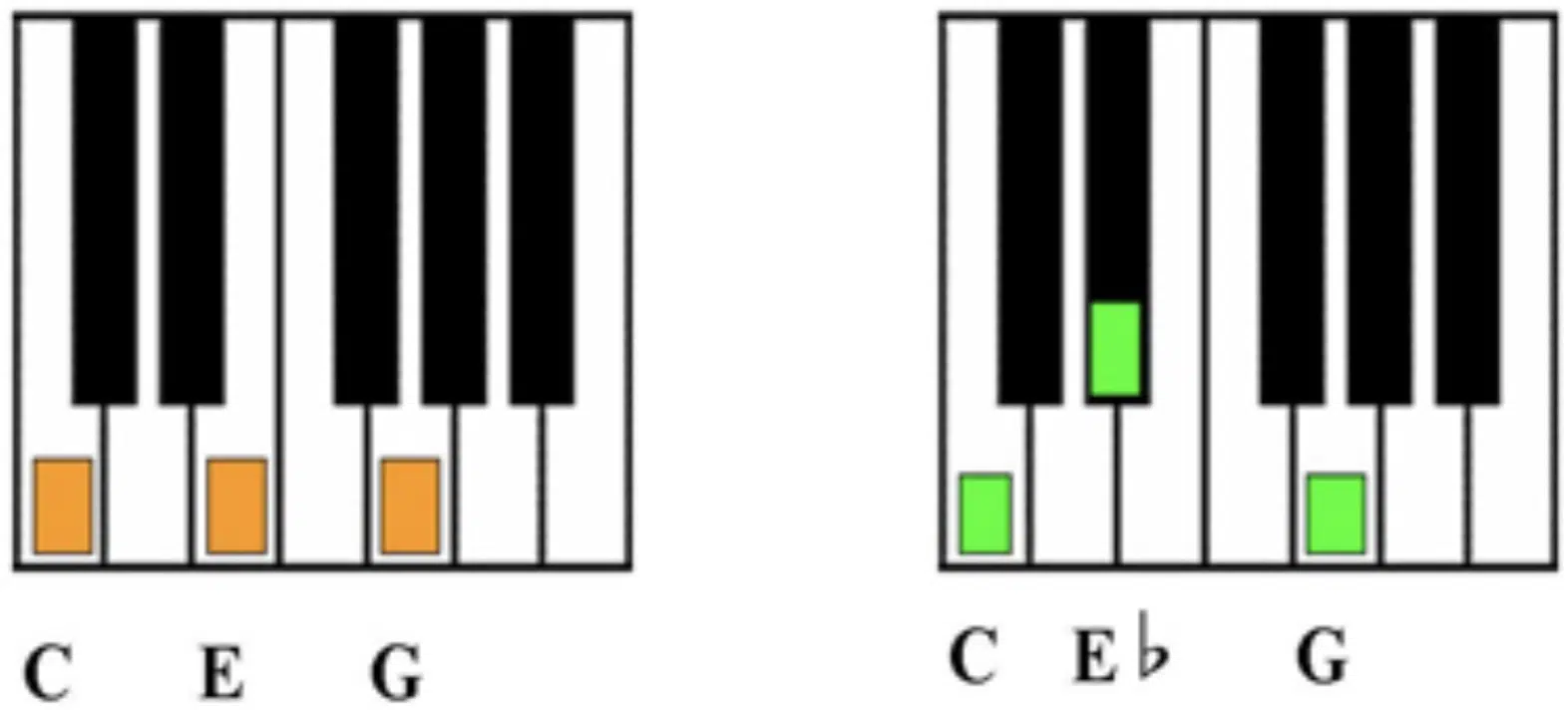
Triads in a major scale consist of three notes: the root note, third, and fifth.
In the C major scale, the triads are C major, D minor, E minor, F major, G major, A minor, and B diminished.
Each triad has its own distinct sound and function within a progression, and understanding thesee triads is key for creating strong harmonic progressions.
- Major triads 一 Sound bright and happy.
- Minor triads 一 Sound more melancholic.
Diminished triads add tension and are often used to transition between chords.
Triads in a minor scale also consist of three notes: the root note, third, and fifth.
In the A minor scale, the triads are A minor, B diminished, C major, D minor, E minor, F major, and G major.
Each triad contributes to the overall emotional tone of the music.
Minor triads create a darker, more introspective sound, and diminished triads add a sense of tension and unease.
Really understanding what a minor triad is will help you create more complex and emotionally engaging chord progressions.
Side note, if you want to learn all about triads, we got you covered.
Pro Tips For Using The Diatonic Scale
Understanding diatonic scales and chords is super important for any music producer. So let’s wrap things out with some pro tips to help you further understand the diatonic scale and really get creative.
.
-
Diatonic Chord Progressions

Diatonic chord progressions are sequences of chords that are built from the notes of a diatonic scale.
In the key of C major, common progressions include I-IV-V (C-F-G) and ii-V-I (Dm-G-C) 一 forming the backbone of many popular songs.
The I-vi-IV-V progression (C-Am-F-G) is another popular choice, often used in pop and rock music thanks to its powerful ability to create a sense of resolution and emotions.
It’s perfect for show-stopping anthems and other emotionally charged tracks that connect with listeners on a deeper level.
Make sure to play around with different chord progressions to see how they change the entire mood/vibe of your music.
NOTE: Try the vi-IV-I-V progression (Am-F-C-G) for a more emotional feel.
Understanding how to create diatonic chord progressions will give you a solid foundation for songwriting and production.
Plus help ensure that your tracks are always professional, harmonically consistent, and pleasing to the ear.
-
Songwriting with Diatonic Harmony

Using diatonic harmony in your songwriting helps create melodies and chord progressions that sound cohesive and natural.
Start by choosing a key and building your chords from the diatonic scale.
For example, in the key of A minor, you can use the chords Am, Dm, and E to create a strong harmonic foundation.
Remember to always experiment with different combinations of chords to find what sounds best 一 try writing a melody that fits within the notes of the diatonic scale.
Understanding diatonic harmony will improve your songwriting skills and help you create more intriguing music.
It provides a clear structure that makes your songs more accessible to listeners.
-
Diatonic Scales and Chords in Production
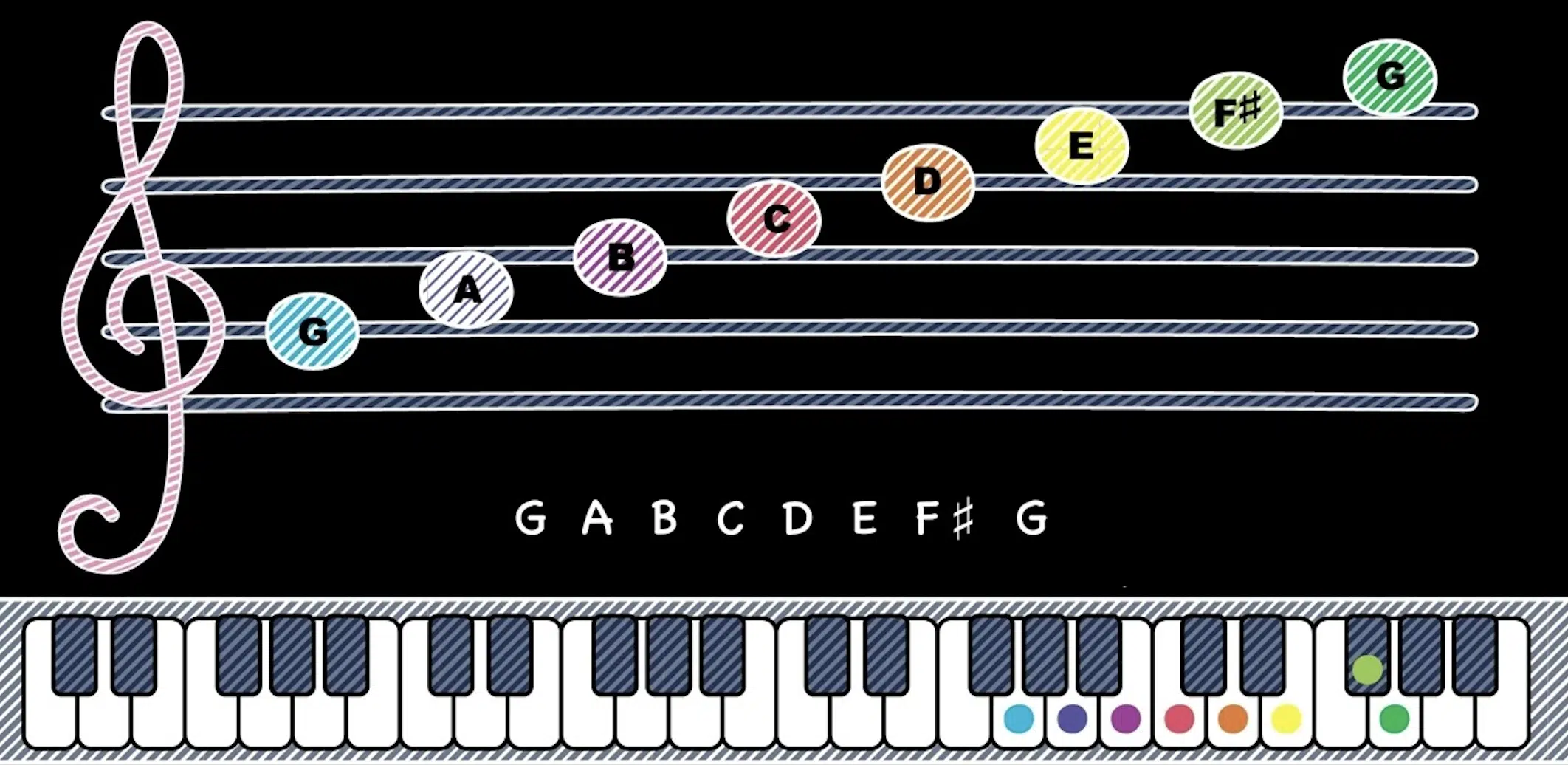
Incorporating a diatonic scale (one of the seven diatonic scales, to be exact) or diatonic chords into your beats can enhance the overall sound and feel.
Use diatonic scales to create flawless:
For example, if you’re producing a track in G major, build your melodies and chords from the G major scale to ensure a cohesive sound.
Diatonic chords in the G major scale include G major, A minor, B minor, C major, D major, E minor, and F# diminished.
Experiment with layering different diatonic chords to create rich harmonies and try using the C-D-E-F-G interval sequence from the C major scale to build your chord progressions.
Keep in mind that diatonic harmony can provide a solid foundation for any genre of music, and really help you kick things up a notch.
By mastering diatonic scales and chords, you’ll have the tools to produce professional-sounding tracks that stick with listeners long after your track ends.
-
Bonus: Modulation and Diatonic Harmony
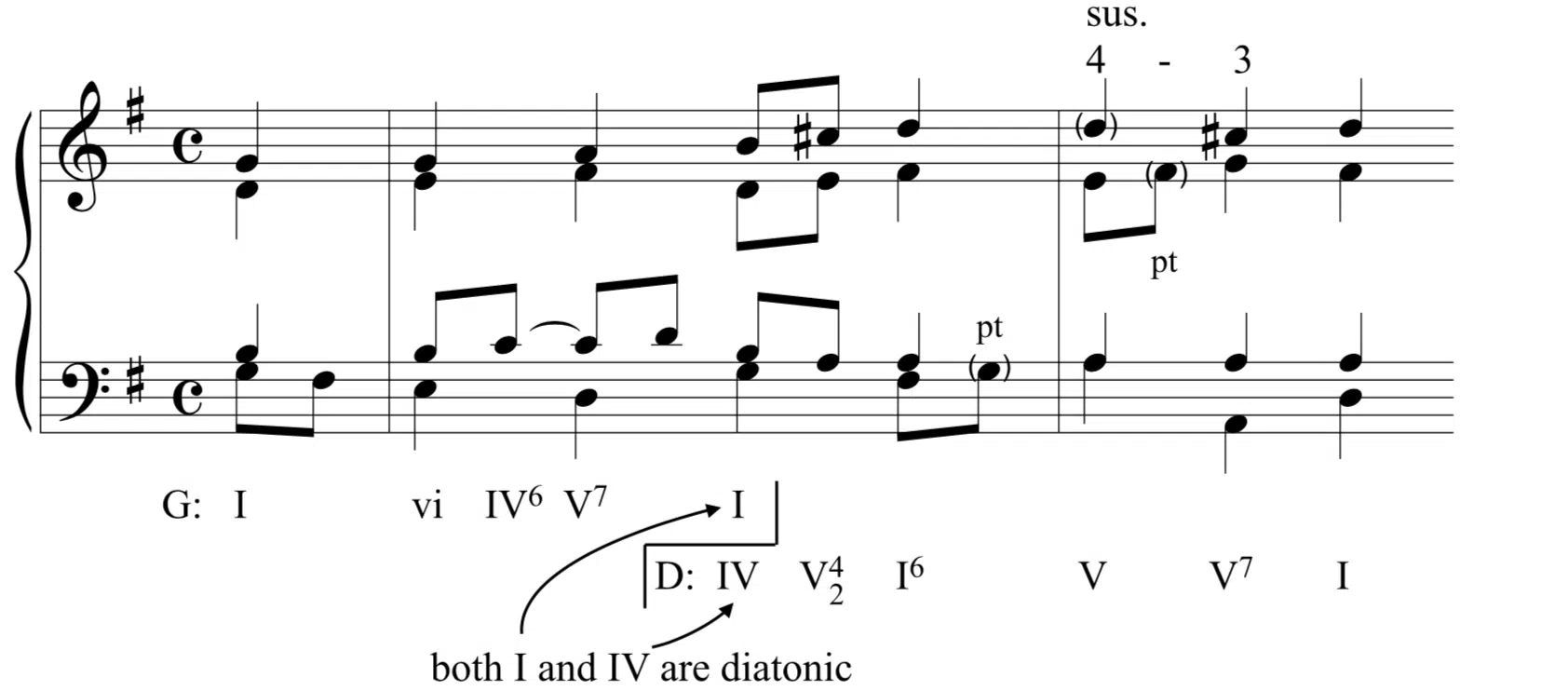
Modulation is the process of changing from one key to another within a song, which can be done smoothly by using diatonic chords that are common to both keys.
For example, in the key of C major, you can modulate to G major by using the G major chord as a pivot.
It will add variety and interest to your music, keep people engaged, and help you really master theory essentials.
So, try modulating to different keys 一 it will add excitement and variety to your tracks, which people really respond to.
Diatonic Scale: Final Thoughts
Using a diatonic scale can be super effective and transformative in your music production.
In order to create compelling melodies and harmonies, you need to really understand the structure and function of diatonic scales and chords.
With all the knowledge you’ve gained today, you’ll be able to do so with ease, plus make sure your tracks are always emotionally engaging.
Speaking of valuable resources, you’ve got to check out this legendary MIDI Chord Pack.
If you’re looking to enhance your knowledge and implement different diatonic scales, this pack is the key.
It contains over 1,200 drag-and-drop MIDI files 一 including key-specific triads, extended chords, and advanced progressions.
You’ll save endless time and eliminate the need for complex music theory, allowing you to focus on creativity and production (which is what it’s all about).
So, dive into your next project with confidence and creativity, and let any diatonic scale guide you to new musical heights.
Until next time…







Leave a Reply
You must belogged in to post a comment.